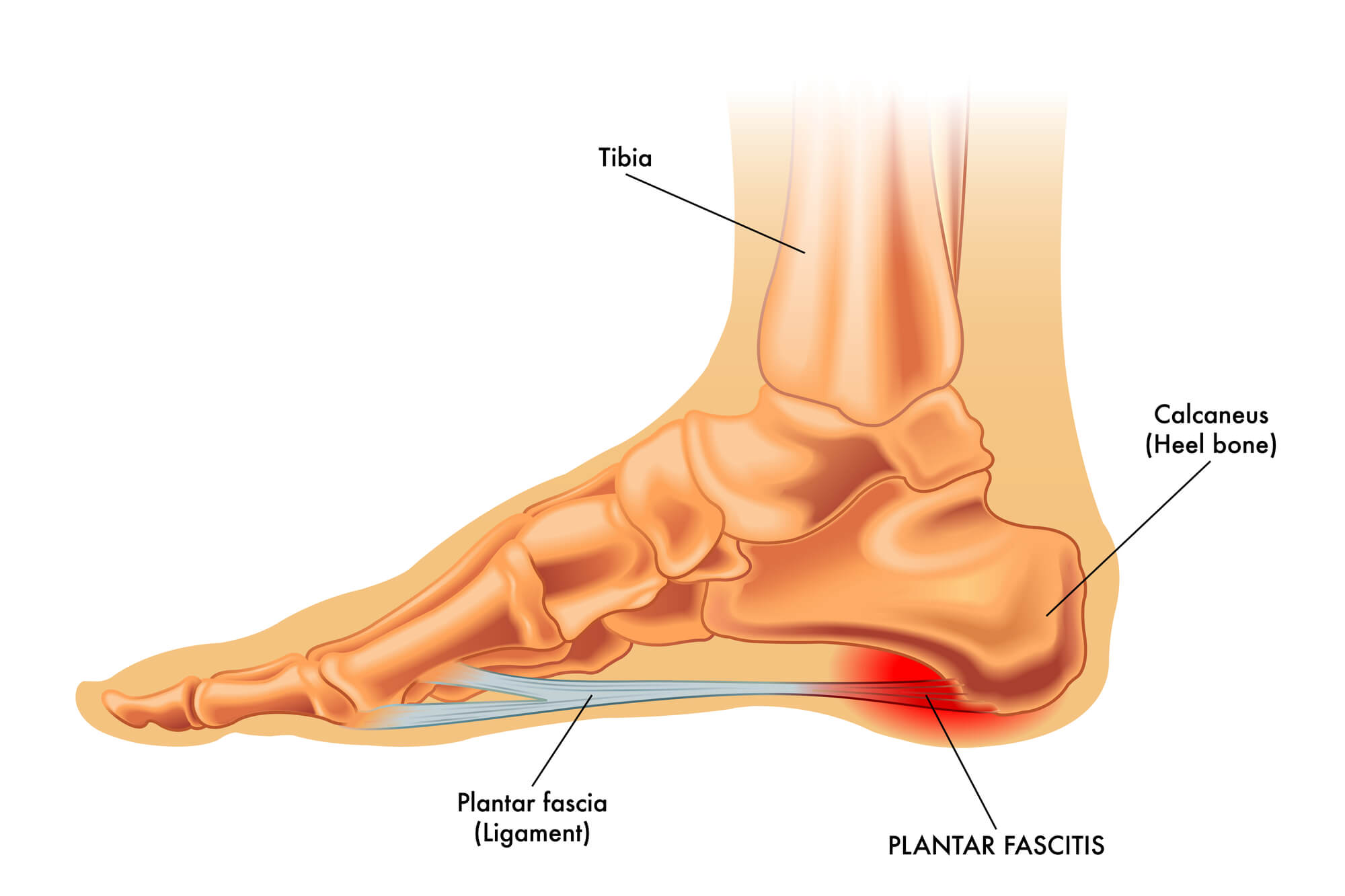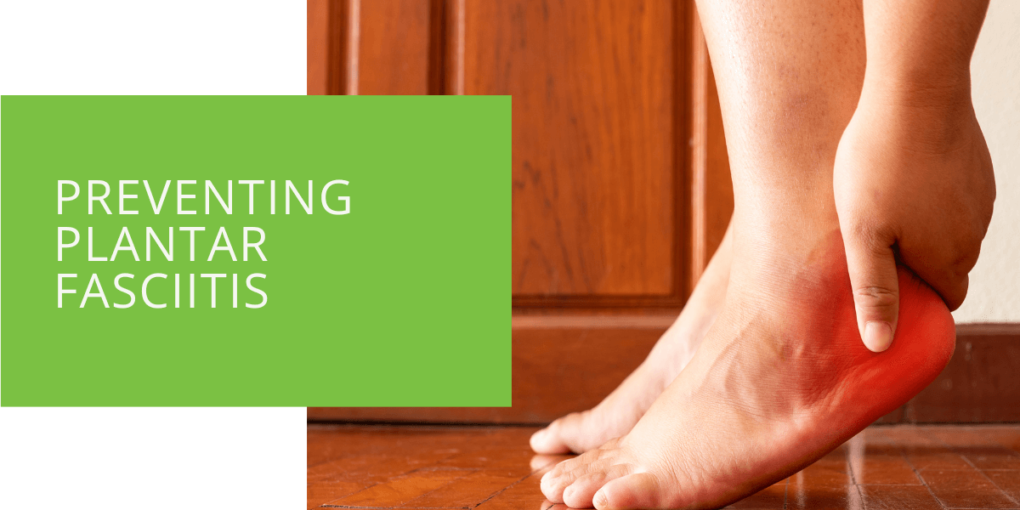Preventing Plantar Fasciitis
Plantar fasciitis is a common foot condition that affects the plantar fascia, the ligament that runs along the bottom of your foot from your heel to your toes. It can cause heel pain and discomfort, making walking or running difficult. However, there are steps you can take to prevent plantar fasciitis from occurring. In this article, we'll provide tips from podiatrists on how to prevent plantar fasciitis.
What is Plantar Fasciitis?
Plantar fasciitis is a condition that causes pain and discomfort in the heel and bottom of the foot. It is caused by the inflammation of the plantar fascia, which can occur due to overuse, poor footwear, or a variety of other factors. Common symptoms of plantar fasciitis include sharp pain in the heel and bottom of the foot, especially when walking or running, and stiffness in the calf muscles.
Risk Factors for Plantar Fasciitis
Several risk factors can increase your likelihood of developing plantar fasciitis. These include flat feet, high arches, tight calf muscles, wearing improper footwear, a sudden increase in activity level, and being overweight. Athletes and runners are also at an increased risk of developing plantar fasciitis due to the repetitive stress placed on the feet.

Choosing the Right Footwear to Prevent Plantar Fasciitis
Choosing the right footwear is crucial for preventing plantar fasciitis. Wearing shoes with good arch support and cushioning can help absorb shock and reduce stress on the plantar fascia. Here are some tips for choosing the right footwear:
- Look for shoes with a wide toe box: Shoes with a narrow or pointed toe box can force your toes to crowd together, putting additional pressure on the ball of your foot and the toes. A wide toe box allows your toes to spread out and reduces the risk of developing bunions or other foot conditions.
- Avoid high heels: High heels can increase the pressure on the balls of your feet and put additional stress on your plantar fascia. If you must wear high heels, try to limit the height to no more than two inches and wear them for short periods.
- Choose shoes with good arch support: Shoes with good arch support can help distribute your weight evenly across your foot and reduce stress on your plantar fascia. Look for shoes with built-in arch support, or add custom orthotics for additional support.
- Ensure your shoes fit properly: Wearing shoes that are too tight or loose can put additional stress on your feet and increase your risk of developing plantar fasciitis. Make sure your shoes fit properly and allow room for your toes to move around.
Exercises to Strengthen the Foot and Prevent Plantar Fasciitis
Strengthening the muscles in your feet and calves can help by reducing the stress on the plantar fascia. Here are some exercises that can help strengthen your feet:
- Calf stretches: Tight calf muscles can put additional stress on your plantar fascia, so stretching them regularly can help reduce the risk of developing plantar fasciitis. Stand facing a wall with your hands on the wall at shoulder height. Step back with your right foot, keeping your heel on the ground. Lean into the wall until you feel a stretch in your calf. Hold for 30 seconds, then switch sides and repeat.
- Foot arch lifts: Sit in a chair with your feet flat on the floor. Lift the arch of your foot by curling your toes under and holding for five seconds. Repeat 10 times.
- Toe curls: Place a small towel on the floor and use your toes to scrunch it up. Hold for five seconds, then release. Repeat 10 times.
- Using a splint: Using a splint to stretch your foot and calf muscles while you sleep can also help.

Other Preventative Measures for Plantar Fasciitis
In addition to proper footwear and exercises, you can take other preventative measures to reduce your risk of developing plantar fasciitis. Here are some other tips to consider:
- Maintain a healthy weight: Being overweight can increase the stress on your feet and your risk of developing plantar fasciitis. Maintaining a healthy weight can reduce the stress placed on your feet.
- Warm up and cool down: Proper warm-up and cool-down routines can help prepare your feet for activity and prevent injury. Start with gentle stretches and gradually increase the intensity of your workout.
- Rest and recovery: Overuse can lead to injury, so giving your feet time to rest and recover is important. If you experience pain or discomfort, take a break from the activity and give your feet time to heal.
- Wear shoes that allow your feet to breathe: Poor blood flow and sweaty feet can increase your risk of developing plantar fasciitis. Choose shoes made of breathable materials that allow your feet to stay cool and dry.
- Seek medical attention: If you are experiencing pain or discomfort in your feet, it's important to seek medical attention from a podiatrist. They can diagnose the underlying cause of your symptoms and recommend the best course of treatment to prevent further injury.

When to See a Podiatrist
If you experience persistent heel pain or suspect you may have plantar fasciitis, it's important to see a podiatrist. They can diagnose accurately and develop a treatment plan to help alleviate your symptoms. Sometimes, a podiatrist may recommend additional treatments such as physical therapy or surgery to correct underlying issues like bunions or flat feet.
Conclusion
Plantar fasciitis can be painful and debilitating, but it's often preventable with proper care and attention to foot health. By wearing proper footwear, performing exercises to strengthen your feet and calves, and taking other preventative measures, you can reduce your risk of developing plantar fasciitis and enjoy a healthy, active lifestyle. If you experience persistent heel pain, seeing a podiatrist is important to determine the cause and develop an effective treatment plan.

